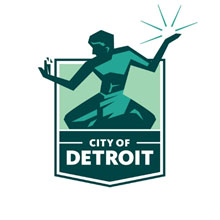| Outcome | Compliant |
4 violations cited :
Code 3-501.18
Ready to eat, potentially hazardous food(s) beyond consume by date longer than 7 days stored at 41 degrees f
FULL FOOD CODE:
A FOOD specified in ¶ 3-501.17(A) or (B) shall be discarded if it: (1) Exceeds the temperature and time combination specified in ¶ 3-501.17(A), except time that the product is frozen; (P) (2) Is in a container or PACKAGE that does not bear a date or day; (P) or (3) Is appropriately marked with a date or day that exceeds a temperature and time combination as specified in ¶ 3-501.17(A). (P)
A FOOD specified in ¶ 3-501.17(A) or (B) shall be discarded if it: (1) Exceeds the temperature and time combination specified in ¶ 3-501.17(A), except time that the product is frozen; (P) (2) Is in a container or PACKAGE that does not bear a date or day; (P) or (3) Is appropriately marked with a date or day that exceeds a temperature and time combination as specified in ¶ 3-501.17(A). (P)
Priority
Corrected on 8-10-2021
Code 4-501.114
Chlorine solution concentration below 100 ppm
FULL FOOD CODE:
A chemical SANITIZER used in a SANITIZING solution for a manual or mechanical operation shall meet these limits or as otherwise approved: (P) Chlorine ppm pH<10 pH<8 25 120 F 120 F 50 100 F 75 F 100 55 F 55 F Iodine a concentration of between 12.5 and 25 ppm and minimum temp of 75 F and pH of 5 or less or meets manufacturer's specifications. (P) Quats minimum temperature of 75 F, hardness of 500 ppm or less and meet manufacturers use directions. (P)
A chemical SANITIZER used in a SANITIZING solution for a manual or mechanical operation shall meet these limits or as otherwise approved: (P) Chlorine ppm pH<10 pH<8 25 120 F 120 F 50 100 F 75 F 100 55 F 55 F Iodine a concentration of between 12.5 and 25 ppm and minimum temp of 75 F and pH of 5 or less or meets manufacturer's specifications. (P) Quats minimum temperature of 75 F, hardness of 500 ppm or less and meet manufacturers use directions. (P)
Priority
Corrected on 8-10-2021
Code 4-501.11
Equipment in poor repair
FULL FOOD CODE:
EQUIPMENT shall be maintained in a state of repair and condition that meets the requirements of the code.
EQUIPMENT shall be maintained in a state of repair and condition that meets the requirements of the code.
Core
Not corrected
Code 6-501.110
Locker(s)/designated storage area(s) for employee belongings storage not used
FULL FOOD CODE:
(A) Dressing rooms shall be used by EMPLOYEES if the EMPLOYEES regularly change their clothes in the establishment. (B) Lockers or other suitable facilities shall be used for the orderly storage of EMPLOYEE clothing and other possessions.
(A) Dressing rooms shall be used by EMPLOYEES if the EMPLOYEES regularly change their clothes in the establishment. (B) Lockers or other suitable facilities shall be used for the orderly storage of EMPLOYEE clothing and other possessions.
Core
Corrected on 8-10-2021
